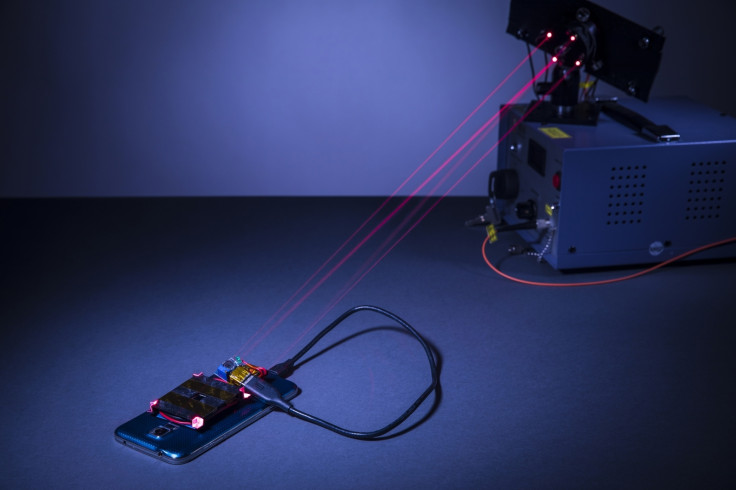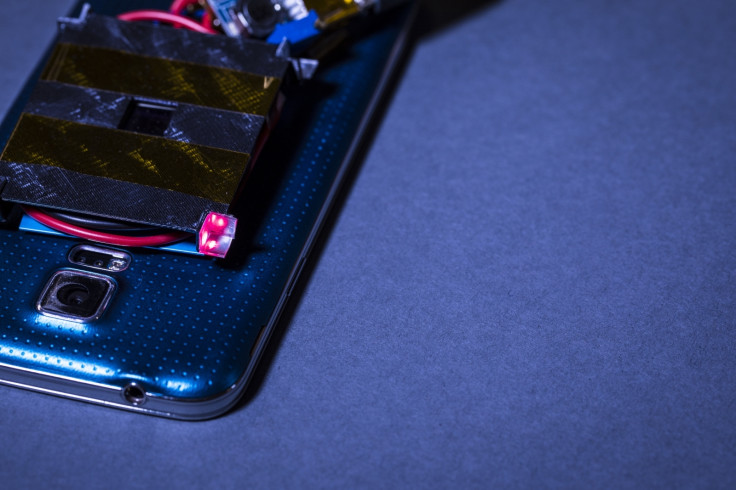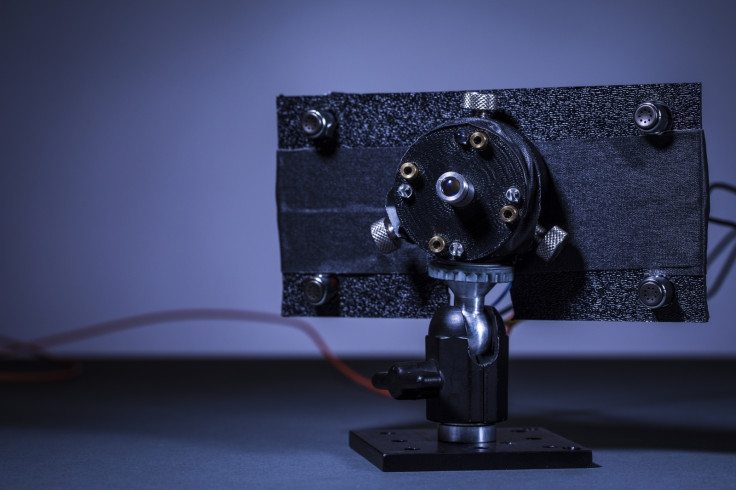Lasers could soon be used to charge your phone wirelessly from across the room
These lasers deliver enough power to charge a phone just as fast as a normal USB cable would.

Wireless tech that uses only lasers to charge battery-operated devices like phones are being developed. The charger uses safe lasers that take about as long to charge a phone as a USB cable would.
This breakthrough development is being worked on by engineers at the University of Washington (UW) and the study has been published in the journal "Proceedings of the Association for Computing Machinery on Interactive, Mobile, Wearable & Ubiquitous Technologies", according to Phys.org. A narrow, invisible beam of 'red' laser light, the team found, is sufficient to charge a mobile phone wirelessly from across the room.
By attaching a thin power cell to the back of a smartphone, researchers were able to generate power from a laser pointed at it. To bleed off excess heat from the laser, the device also has a flat metal heatsink. The laser will also cut off when the charger is not in line with the beam. This is accomplished through a reflector-based mechanism that keeps the beam on only if it is charging the phone.
Lasers can deliver steady power of up to 2 watts across a distance of about 4.3 metres to cover an area of nearly a square metre (96.7 sq cm). The emitter can also be made to project charging lasers to cover 100 sq cm over a distance of 12 metres. That means the phone could be placed on any surface, for example, a table top and, as long as it is on the table, it will receive the charge.
"Safety was our focus in designing this system," said co-author Shyam Gollakota, an associate professor in UW's Paul G Allen School of Computer Science & Engineering. "We have designed, constructed and tested this laser-based charging system with a rapid-response safety mechanism, which ensures that the laser emitter will terminate the charging beam before a person comes into the path of the laser," he added.
The focussed laser that was used is configured to a near-infrared spectrum. A second set of beams envelop the charging beam. Called guard beams, they are used to shut off the main laser and the safety systems are built based on these guards. The reflectors that shine light back to the laser emitter, placed in the power cell, are custom built and 3D-printed, noted the report.

While there is no actual charge from the guard beam, when a phone equipped with this charging system comes within range, it triggers the main laser. It acts as a sensor to trigger the charging mechanism and to switch it off as well. Anything blocking the lasers will instantly shut the charger off, and this includes even the fastest human movement possible, noted the report.
"The guard beams are able to act faster than our quickest motions because those beams are reflected back to the emitter at the speed of light," expained Gollakota. "As a result, when the guard beam is interrupted by the movement of a person, the emitter detects this within a fraction of a second and deploys a shutter to block the charging beam before the person can come in contact with it."

The phone will communicate with the charger, prompting it to switch on by emitting high frequency chirps that are inaudible to the human ear, according to the report. "This acoustic localisation system ensures that the emitter can detect when a user has set the smartphone on the charging surface, which can be an ordinary location like a table across the room," said co-lead author Vikram Iyer, a UW doctoral student in electrical engineering.
It is not clear yet if this tech will be mass-produced, or when it will reach consumer's hands. As of now, it is still under development at UW. However, researchers are confident about the ability of the charger. "Instead of plugging your phone in, you simply place it on a table," said one of the co-lead authors of the study.






